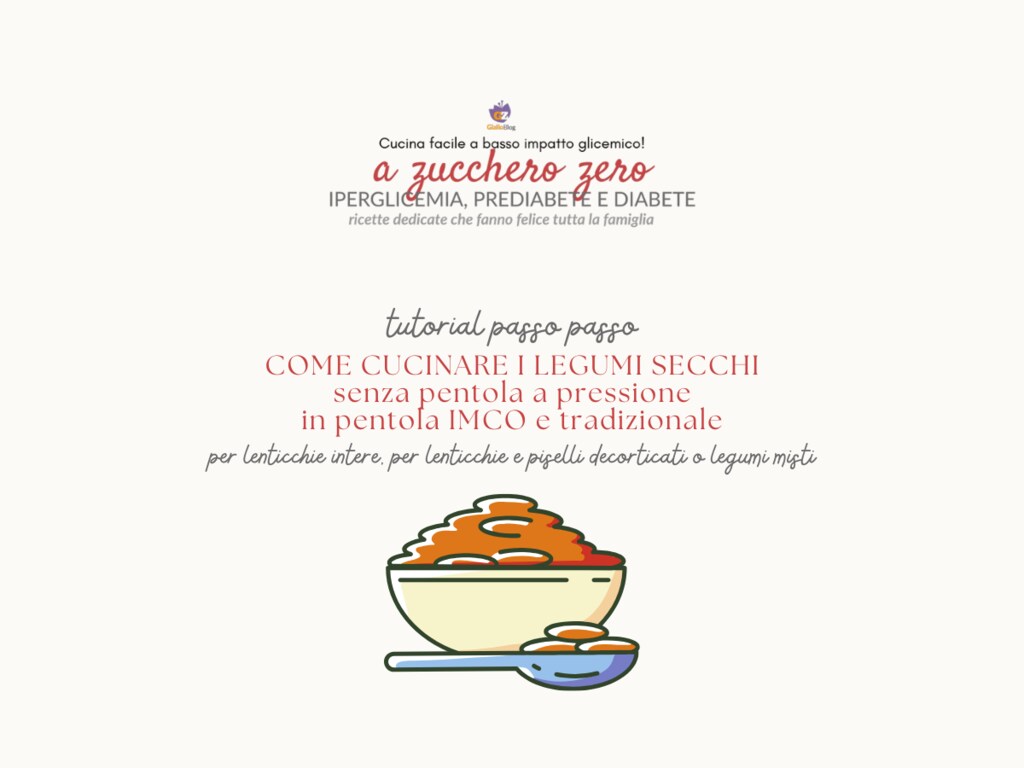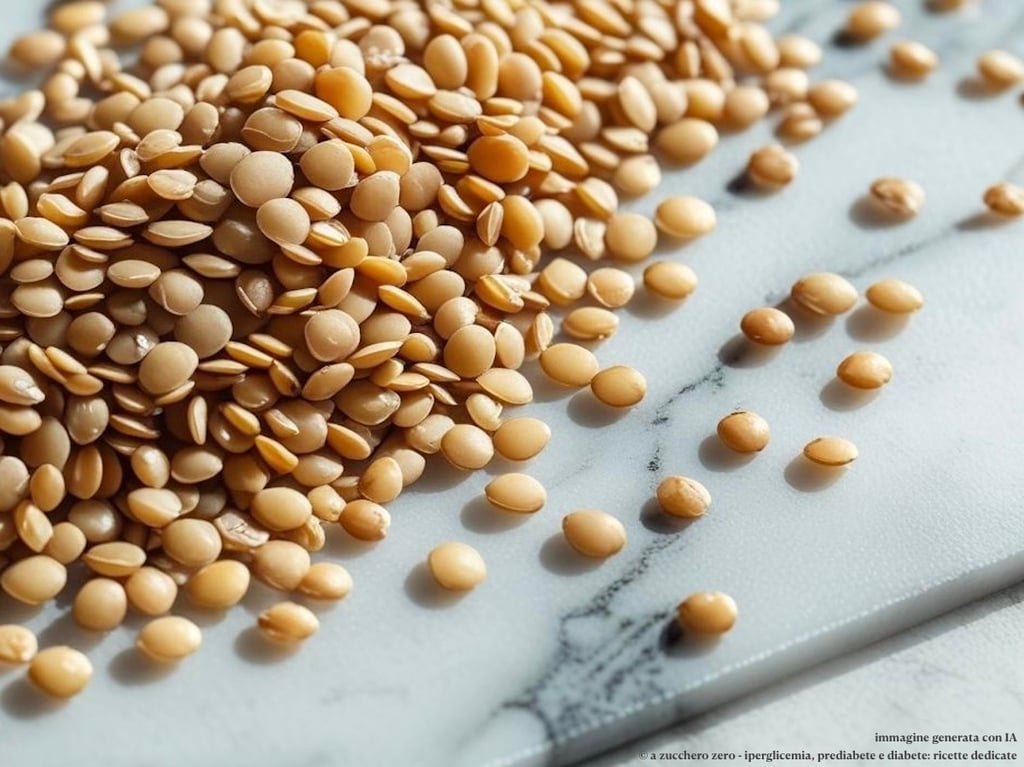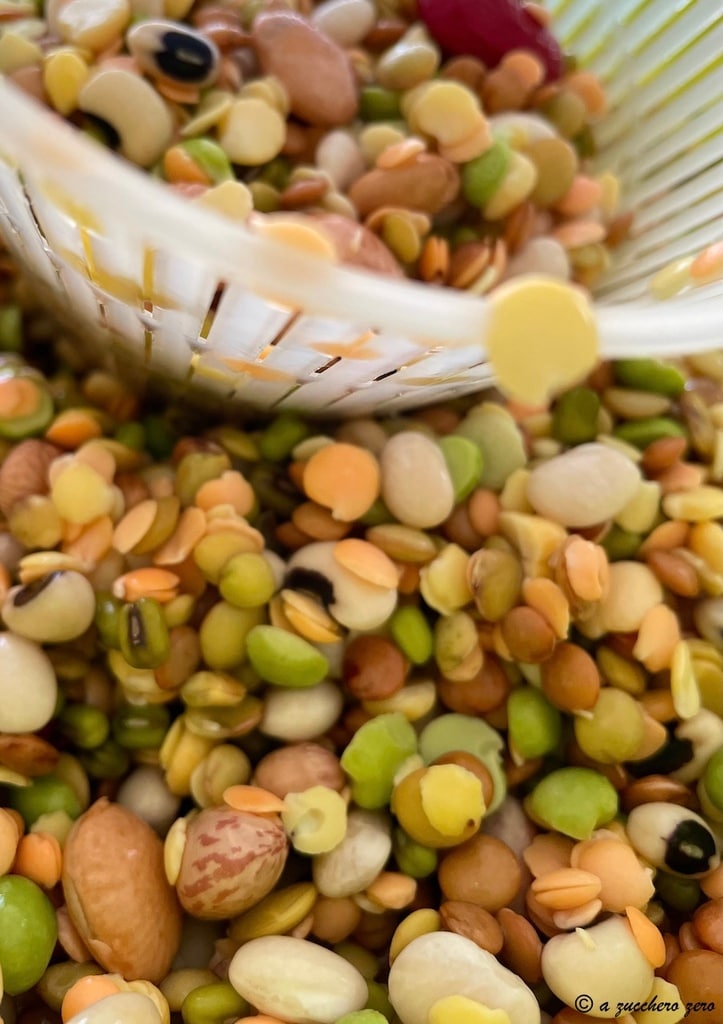How to cook dried legumes without a pressure cooker, in IMCO pot and traditional pot.
Step-by-step tutorial useful for beginners and for those looking for alternative methods to the pressure cooker.
This procedure is valid for whole lentils, peeled lentils, and split peas, or mixed legumes.
For chickpeas, beans, and broad beans, I prefer to use the pressure cooker: it reduces cooking times and makes them softer and more digestible.
My basic recipe for cooking legumes perfect as soup or as a base for appetizers, first courses, or main dishes.
With soaking
Remember that dried legumes need soaking for 12-24 hours, during which it’s good to change the water a couple of times and rinse them well before cooking.
Why soak legumes
According to the package instructions, some legumes do not require soaking, but I encourage you to try: at our house, soaking is the first secret ingredient.
Cooked this way, they are digestible and light.
Choice of legumes
I prefer to buy locally sourced legumes.

- Difficulty: Easy
- Cost: Economical
- Rest time: 12 Hours
- Preparation time: 20 Minutes
- Portions: 2People
- Cooking methods: Stovetop
- Cuisine: Italian
Ingredients
This procedure is valid for whole lentils, peeled lentils, and split peas, or mixed legumes.
For chickpeas, beans, and broad beans, I prefer to use the pressure cooker: it reduces cooking times and makes them softer and more digestible.
- legumes (2 servings according to dietary plan)
- 1 onion (blended or grated or whole)
- 1.7 oz water (+ as needed)
- 1 broth cube (homemade vegetable or a celery stalk)
- to taste salt
- 1 drizzle extra virgin olive oil (raw)
Suggested Tools
- Knife
- Cutting Board
- 1 Colander fine mesh
- 1 Bowl or salad bowl
- 1 Pot IMCO or regular
Preparation
Recommended portions according to healthy eating guidelines
– fresh, soaked, or canned legumes: 150 g;
– dried legumes: 50 g.
Quantities are always personal.
I usually prepare more portions to have a convenient stock to freeze.
Pour the legumes onto a surface and carefully check them with your fingers, removing any impurities or stones.

– soaking:
is used to soften the legumes and to release anti-nutrients into the water.
The soaking water should not be used for cooking.– add an onion.
– wash and rinse the dried legumes well until the water is clear;
– soak for about 12 hours, changing the water a couple of times;
– rinse the hydrated legumes well before cooking.Anti-waste tips
Use a fine mesh colander or ricotta baskets and collect the soaking water to water plants; not for food use.The hydrated and cleaned legumes are ready to be placed in the pot.

Peel and wash the onion.
Blend or finely grate the onion, or leave it whole if you want to remove it after cooking.In a pot:
– pour the onion and heat;
– add 1.7 oz of water and stew gently.Pour the legumes and cover with water.
Add a vegetable broth cube or a celery stalk.I use an IMCO pot, a precious gift from my mother-in-law, which allows cooking with the flame off.
With IMCO pot
Cover with the lid and bring to a boil.
When a thin stream of steam escapes, turn off the flame.With a traditional pot
Continue cooking over low heat.Whatever the pot
After 20 minutes check the legumes’ cooking and add salt: now and not at the beginning to prevent the legumes’ outer shell from hardening, which would make cooking longer.
If necessary, add more water and continue until you reach the desired consistency: whole or broken down legumes.Your digestible and light legumes are ready.
In the basic recipe perfect as soup or as a base for appetizers, first courses, or main dishes.
Plate and complete with a drizzle of raw olive oil for the best taste.
Enjoy your meal!
Pass the cooked legumes through a food mill: ensures the separation from skins without the formation of air bubbles.
Or use peeled legumes.
Storage, Tips, and Variations
Being a basic recipe I only add the onion.
If you prefer, you can add other vegetables: cleaned and chopped carrot and celery or a frozen soffritto mix.
Also, a few tablespoons of tomato sauce or chopped tomatoes.
Store cooked legumes in airtight containers:
– in the fridge for up to 3-4 days;
– in the freezer for up to 3 months.
It is advisable to drain the legumes before freezing: it may result in a slight loss of nutrients but in the context of freezer storage, it is a useful choice:
– better preservation without ice crystals;
– faster thawing;
– versatility: drained legumes are more practical to use in different recipes.
The amount of nutrients lost is minimal: most nutrients remain in the legume itself, plus many of these substances would degrade anyway during freezing and subsequent reheating.
Let the legumes cool completely, drain and portion them.
If you want to recover everything, you can use the liquid immediately or freeze it separately.
When thawing them, you can reintegrate the liquid by adding water or broth.
If you plan to use them in brothy dishes like soups or velvety soups, you can freeze them with a little of their cooking liquid, ensuring the container is appropriate and there is room for expansion.
FAQ (Frequently Asked Questions)
Tips on how to pair legumes
Recommended pairings:
– legumes + grains [e.g., bread, pasta, or rice], choose grains preferably whole;
– legumes + proteins.
Observe the proportions and combinations indicated in your dietary plan.
To delve into the topic read the article by clicking the following link: Pairing legumes in the diet.How can I ensure that legumes are from Italy?
Often, legumes are grown abroad and packaged in Italy.
Carefully check that the packages indicate:
Origin: Italy; Grown in Italy; 100% Italian Product.
The wording “EU” or “non-EU” means they come from different countries, for example, Canada.How many grams of legumes per person?
Recommended portions according to healthy eating guidelines
– fresh, soaked, or canned legumes: 150 g;
– dried legumes: 50 g.
Quantities should always be adapted to individual nutritional needs.Why soak legumes?
It is used to soften the legumes and to release anti-nutrients into the water.
The soaking water should not be used for cooking.How to make legumes more digestible?
– soaking;
– add an onion.How to reduce the fiber in legumes?
Pass the cooked legumes through a food mill: ensures separation from skins without forming air bubbles.
Or use peeled legumes.

